On the verge of default: Whose fault is it?
Sumera Pirzada
I do not deem it necessary to cite the challenges facing our economy right now. All we hear nowadays is fiscal and trade imbalances reaching unsustainable levels, persistent inflation, sliding stock market and nosediving rupee.
In retrospect, in the last 20 years all our governments have “borrowed and spent” to achieve the so-called “economic growth”.
Sometimes, they have achieved their desired figure at the cost of huge fiscal deficits and trade imbalances that they have conveniently ignored while boasting their achievements during electoral campaigns.
Similarly, looking at the performance of the outgoing government let’s analyse their last budget.
As per State Bank’s Annual Report 2021-22, when the budget for FY 2021-22 was presented, it was deemed to be very ambitious and optimistic by the experts.
It was acknowledged in the budget that the pickup in Pakistan’s economy was largely a result of fiscal incentives at the back of high deficits, debt deferral of approximately $3.6 billion by the G20, concessional credit to the private sector of five percent of the GDP and an increase in demand through income support programmes compounded by the Covid enforced economic downturn having increased debt to GDP ratios across 40 out of 43 countries in Asia and the Pacific region.
In some sense, the idea was to spend our way out of the contractionary and Covid dip to a more sustainable growth and the developmental spending was increased by 40%.
Subsidies were jacked up to Rs682 billion, with a major share of Rs596 billion for the power sector. Revenue target for the FBR was set at Rs5,829 billion for FY22 of which it has managed to collect Rs4,382 billion till March 2022.
In order to support businesses, 12 withholding taxes have been withdrawn on bank transactions, travel, marginal financing, CNG and petroleum products.
Mark-up payment were calculated at Rs3,060 billion, accounting for 36% of the budget.
As I write this, Pakistan is all set to achieve a GDP growth in the range of approximately six percent for the current fiscal year mainly because of the improved contribution of industrial and services sectors with the latter increasing its share in the GDP to 62% in FY21.
The projections estimate that the size of the economy might touch Rs63.8 trillion for the current fiscal year or even cross that. This is because the nominal growth (GDP growth plus inflation) would be up by around 19 to 20% for the current fiscal year.
On the other side of the picture, as acknowledged by the former financial minister, Shaukat Tareen, total debt taken by PTI government is Rs17.8 trillion.
This consists of Rs8.9 trillion Interest payments, Rs4.4 trillion accounted for devaluation of the rupee and Rs3.9 trillion is the net borrowing.
Trade deficit from July to April $39 billion, the highest ever in our history.
The current account deficit for the last quarter was at $13.2 billion. The deficit was financed by incremental net liabilities of $7.4 billion, leaving behind $5.8 billion that were financed by the forex reserves of the country.
No wonder, we are at the verge of a default with the SBP having gone down on liquid foreign exchange reserves from $20 billion in August 2021 to $10.1 billion in May 2022.
It is pertinent to question the economic governance of our country that all of this economic burden has accumulated in the name of what? The so-called growth which has not been translated into any sort of well-being for the people. The elite has always benefited from such growth that is manifested through the “imported lifestyle” and cheap financing made available to them time and again in the name of growth.
We Pakistanis (specially the elite) tend to live beyond our means, and do like finer things but on the flipside our lavish lifestyles have led to an ever-deteriorating balance of payments.
Ban on import of non-essential items, a long overdue step has been taken recently but as per the upcoming news, International Monetary Fund has raised its concerns that under its programme it cannot be done.
So the government can mull over imposing heavy duties on imports to contain them to a desired level.
The economic mess in which we are today is the result of continuous mismanagement of our economic managers.
For instance, one of the plausible critiques on the outgoing government is for adding additional Rs4.4 trillion public debt by devaluing the rupee.
Highly responsible for this sudden and swift depreciation against the dollar are the previous regimes as they kept the rupee-dollar parity on artificial levels for too long .This artificial parity kept fueling our import bill as the actual rate would have set off alarms long ago.
Another argument being presented currently to justify stronger rupee is that our exports are somewhat inelastic to currency changes.
Our exports mainly comprise of textile and agricultural products, which are mainly affected by power outages and rainfall than currency fluctuations. This is despite clear recommendations for diversification of our export potential from several quarters, including the GSP+ review by the European Union.
Some economic wizards were able to sail through their tenures using number crunching gimmicks.
Unfortunately that is not the case today, the economic crisis which Pakistan is currently facing is unprecedented.
The global economy is facing soaring inflation for the last one year. As we, the inhabitants of this planet have not invested enough in conservation of our planetary resources. This ever-present scarcity has exacerbated with the surge in demand post the pandemic converting it into multidimensional crises.
Moreover the Russia-Ukraine conflict and the lockdown of the Chinese economy has added to the world’s economic woes in general and emerging economies in particular.
Currently the whole world is in a dread of stagflation due to supply side inflationary pressures.
As I write this, the ongoing staff level discussions with IMF have hit a deadlock over the foremost demand of the IMF i.e. the withdrawal of subsidies .This along with further belt-tightening measures on social development, a trademark of IMF conditions.
The government will have to make these decisions very swiftly in order to put the economy back on track but they are extremely unpopular decisions in the current political climate hence the prime minister has twice rejected the summary.
Apparently, the government has not been able to buy some time from the IMF for roll back of subsidies.
Some of the concrete measures which can be taken immediately could be:
-
The implementation of different fuel slabs could have a longer-term effect. The government should only provide marginalised subsidy to public transport, commodity carriages and enforce an absolutely no subsidy on bigger vehicles for personal usage.
-
Expansion/ restoration of direct relief packages to the people through social protection programs be it BISP or Ehsaas program or a new one as deemed “politically viable “ by the new government to sail through these challenging times.
The government can also take the following measures to save power and gradually roll back subsidies given to the power sector:
-
Closure of markets at 8pm on weekdays and limited timings of 12-5 pm on Saturday and Sunday.
-
Forwarding the clock by one or one and a half hour can enable us to make the most of daylight on long summer days and hence cut down our electricity usage.
-
Increase the per unit rate for households to curb unnecessary usage of air conditioners.
-
The ongoing so far dry summer will also scale up energy crisis so load-shedding for households can also be an option to keep the industrial wheel spinning.
-
Those who can afford the use of air conditioners can also afford fuel to run their personal generators.
On the flipside, as being debated currently, the sudden or gradual withdrawal of these subsidies will further fuel up inflation.
However increasing interest rates, also present on the IMF wish list and which the SBP has already hiked in the last two months by 400 bps pushing the policy rate to 13.75 % is not a viable option as in our case cyclical price pressure has always played a pivotal role in building up the supply side inflationary pressures.
Moreover, the government is heavily reliant on commercial bank borrowings and such high rates will have a huge impact on the already enormous public debt.
I know these measures will be called gimmicks but such high rates have always crowded out the private sector and commercial banks are more than happy to invest in risk-free government securities at these levels.
This is not a structural reform but can save millions of rupees in the short-run. Though these interest rates can attract foreign inflows in the form of investment in marketable securities but historically speaking that amount will be very meagre in front of our debt servicing due. Our current political situation is also not at all conducive for foreign investment.
Another daunting task awaiting the government is the preparation of national budget for fiscal year FY 2022-23. In place of increasing the usual GST and indirect taxes on the already burdened salaried class, the government should look for new tax avenues.
But in order to achieve all this, a stable government is the foremost priority and there is a dire need for a national dialogue, beyond partisan priorities, engaging all the stakeholders including PTI because no political party in Pakistan is eligible to take such tough decisions on its own.
The ongoing political chaos will only bring us closer to the fate Sri Lanka had. Let us hope sanity prevails and Pakistan is able to avert this economic and political crisis.
-Figures source SBP Annual Report 2020-2021 and quarterly reports 2021-2022
The writer is a former banker and has worked in the treasury departments of two commercial banks. She has also served as a member of FMAP (Financial Markets Association of Pakistan) from 2005-2019.
For the latest news, follow us on Twitter @Aaj_Urdu. We are also on Facebook, Instagram and YouTube.


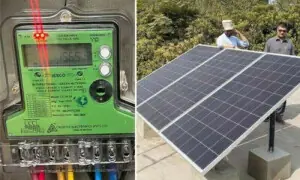
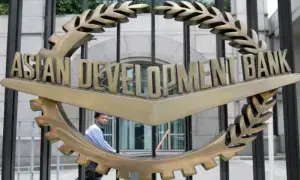
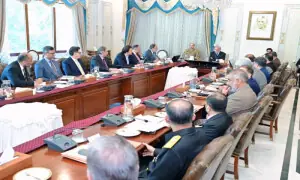
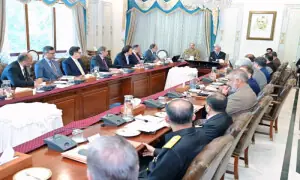
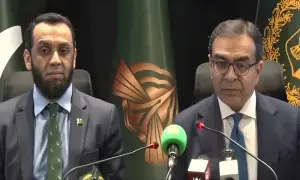
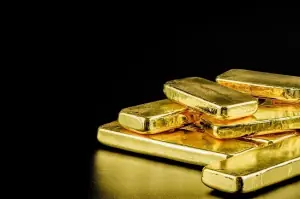

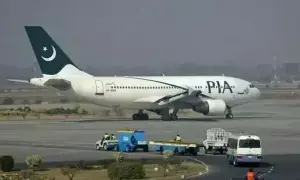

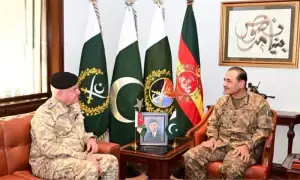

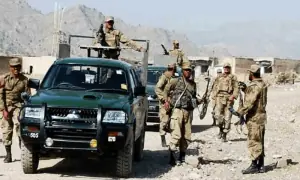


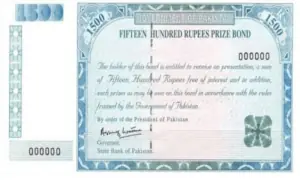
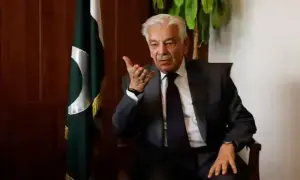
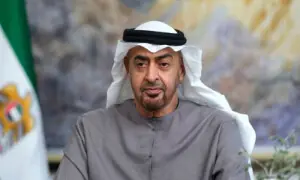

Comments are closed on this story.